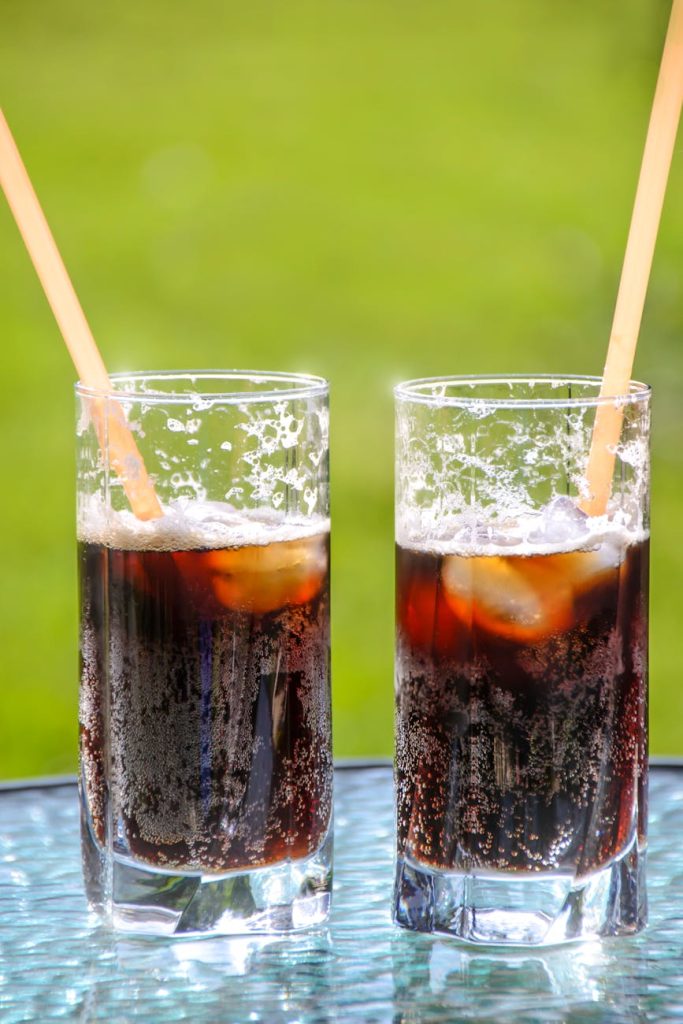Soda. It’s bubbly, sweet, and oh-so-satisfying. But that fleeting pleasure often comes at a steep price: weight gain, tooth decay, metabolic disruption, and a dependence that can be surprisingly difficult to shake. If you’re ready to ditch the sugary stuff and reclaim your health, you’ve come to the right place. As a health coach, I’ve helped countless individuals break free from the soda stronghold. This blog post will equip you with the knowledge and strategies you need to successfully unhook from soda and embrace a healthier, happier you.

Understanding the Soda Addiction: It’s More Than Just Sugar
Before we dive into the “how,” let’s understand the “why.” Soda’s addictive nature stems from a complex interplay of factors:
- Sugar Rush and Crash: The high sugar content triggers a rapid release of dopamine, the brain’s “feel-good” chemical. This creates a temporary surge of pleasure, followed by a dramatic crash, leaving you craving another hit.
- Caffeine Dependence: Many sodas contain caffeine, a stimulant that can lead to physical dependence and withdrawal symptoms like headaches, fatigue, and irritability.
- Artificial Sweeteners and Brain Chemistry: Diet sodas, while calorie-free, aren’t a free pass. Artificial sweeteners can disrupt gut bacteria and may even stimulate sweet receptors in the brain, perpetuating cravings.
- Habit and Ritual: Soda consumption is often tied to specific routines, like grabbing a can with lunch or enjoying one during a movie. These ingrained habits can be difficult to break.
- Marketing and Social Influence: Aggressive marketing campaigns and social norms contribute to soda’s widespread appeal.

The Health Consequences of Soda Consumption: A Reality Check
The negative impacts of regular soda consumption are well-documented:
- Weight Gain and Obesity: Excess sugar converts to fat, contributing to weight gain and increasing the risk of obesity-related diseases.
- Type 2 Diabetes: Frequent soda intake elevates blood sugar levels, increasing insulin resistance and the risk of type 2 diabetes.
- Tooth Decay: The high sugar and acid content erodes tooth enamel, leading to cavities and dental problems.
- Heart Disease: Studies have linked sugary drinks to increased blood pressure, cholesterol levels, and the risk of heart disease.
- Liver Damage: Excessive fructose consumption can lead to non-alcoholic fatty liver disease.
- Kidney Stones: Some sodas contain phosphoric acid, which can increase the risk of kidney stones.
- Osteoporosis: Phosphoric acid can also interfere with calcium absorption, potentially weakening bones.
- Mental Health: Some studies have shown correlation between high soda consumption and increased risk of depression.

The Unhooking Process: A Step-by-Step Guide
Now, let’s get down to the practical strategies for breaking up with soda:
- Set Realistic Goals:
- Don’t try to quit cold turkey if you’re a heavy soda drinker. Gradual reduction is key.
- Start by cutting back one can or bottle per day.
- Set weekly goals and track your progress.
- Find Healthy Alternatives:
- Water: The ultimate hydrator! Infuse it with fruits like lemon, lime, or berries for added flavor.
- Sparkling Water: Provides the fizz without the sugar. Add a splash of juice or a few drops of natural extract.
- Herbal Tea: Offers a variety of flavors and health benefits. Choose unsweetened options.
- Unsweetened Iced Tea: A refreshing alternative to sugary iced tea.
- Kombucha: A fermented tea with probiotics and a slightly fizzy, tangy flavor. Choose low-sugar varieties.
- Identify and Address Triggers:
- Pay attention to when and where you crave soda.
- Are you stressed, bored, or tired?
- Find healthier ways to cope with these triggers.
- If you always get a soda at a certain restaurant, try ordering something else.
- Manage Cravings:
- Drink a glass of water when a craving hits.
- Chew sugar-free gum.
- Engage in physical activity.
- Distract yourself with a hobby or activity.
- Eat a piece of fruit.
- Read Labels Carefully:
- Be aware of hidden sugars in other beverages and foods.
- Check the sugar content per serving and the total number of servings.
- Be aware of the different names for sugar, like high fructose corn syrup, dextrose, and sucrose.

- Increase Your Water Intake:
- Aim for at least eight glasses of water per day.
- Carry a water bottle with you and refill it throughout the day.
- Hydration can help reduce cravings and improve overall health.
- Focus on Whole Foods:
- A balanced diet rich in fruits, vegetables, and whole grains can help stabilize blood sugar levels and reduce cravings.
- Prioritize protein and fiber to promote satiety.
- Get Support:
- Enlist the help of friends, family, or a support group.
- Consider working with a registered dietitian or health coach.
- A support system is a huge help in creating lasting change.
- Don’t Give Up:
- Relapses are normal. Don’t let a slip-up derail your progress.
- Learn from your mistakes and get back on track.
- Focus on the long term benefits of being soda free.
- Increase your Potassium intake:
- Potassium can help balance the effects of the sodium often found in processed foods and drinks, and help with water balance.
- Foods such as bananas, spinach, and sweet potatoes are great sources of potassium.

Long-Term Strategies for Success:
- Make healthy habits a lifestyle.
- Continue to prioritize water and healthy beverages.
- Limit your exposure to soda advertising and social influences.
- Celebrate your progress and reward yourself with non-food treats.
Breaking free from soda is a journey, not a destination. By implementing these strategies and staying committed to your goals, you can reclaim your health and enjoy a life free from the grip of sugary drinks. Remember, small changes can lead to big results. You’ve got this!



